标签:可见 堆内存 function ++ stat 解决方法 tps res 系统
近期上线了一个系统,鉴权部分使用了Groovy脚本,示例代码如下
ScriptEngineManager factory = new ScriptEngineManager();
ScriptEngine engine = factory.getEngineByName("groovy");
String function = String.format("def getTargetParamValue(%s) {return \"%s\"}", "o", "$o");
engine.eval(function);
Invocable invocable = (Invocable) engine;
Object result = invocable.invokeFunction("getTargetParamValue", "test-string");
System.out.println(result); 这段代码定义了一个Groovy的方法,根据传进去的参数返回对应的值。
由于生产环境流量很大,这段代码被频繁执行。测试时的代码如下
public class ScriptEngineTest {
public static void main(String[] args) {
ScriptEngineManager factory = new ScriptEngineManager();
ScriptEngine engine = factory.getEngineByName("groovy");
//测试时改为死循环
for (int i = 0;; i++) {
try {
String function = String.format("def getTargetParamValue(%s) {return \"%s\"}", "o", "$o");
engine.eval(function);
Invocable invocable = (Invocable) engine;
Object result = invocable.invokeFunction("getTargetParamValue", "test-string");
System.out.println(result);
TimeUnit.MICROSECONDS.sleep(100);
System.out.println(new Date().toLocaleString());
} catch (Exception e) {
String errorMsg = String.format("异常!%s", e.getMessage());
System.out.println(errorMsg);
}
}
}
}模拟生产环境的情况,每秒钟执行10次。通过VusualVM观察JVM
CPU使用情况,可以看到在每次堆内存扩容的时候,CPU使用量会有明显增加
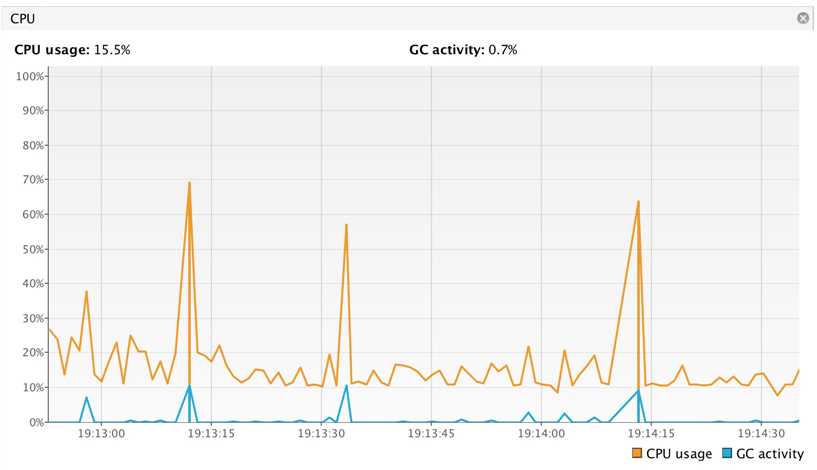
堆内存使用情况
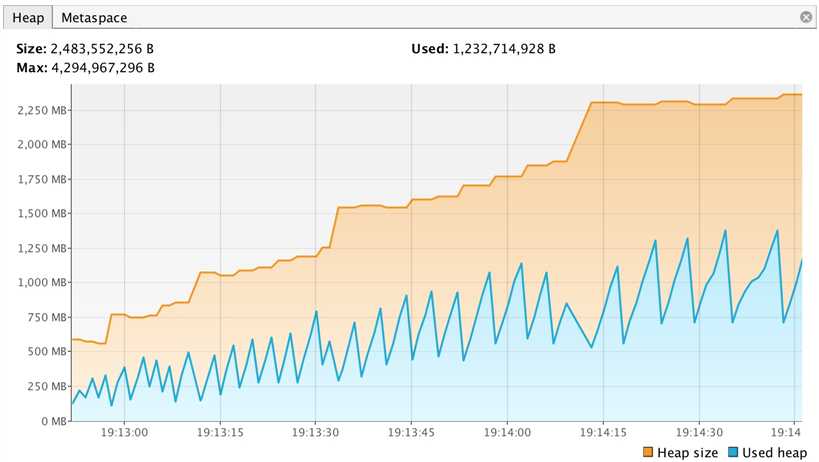
metaspace使用量一直在增加
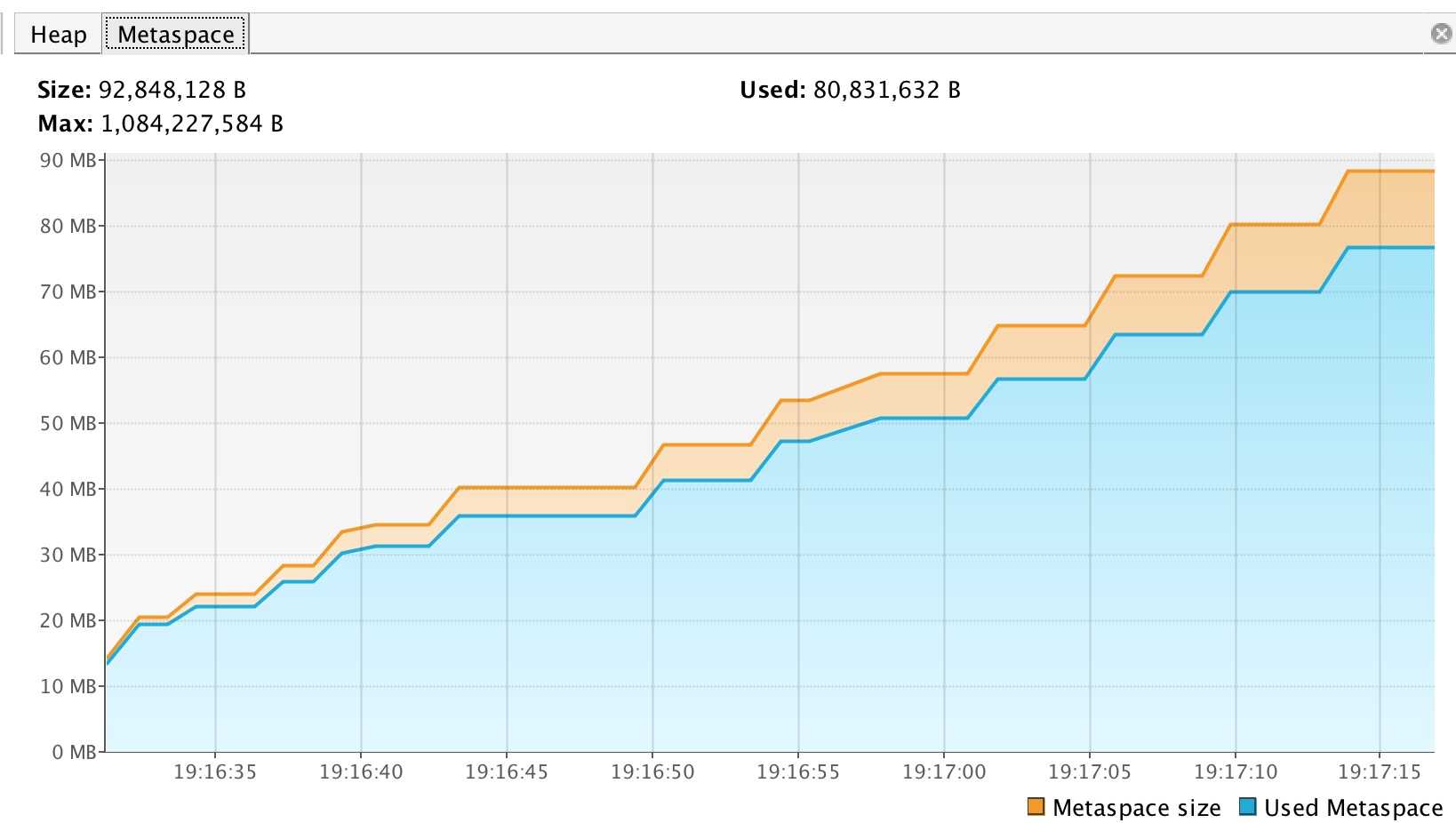
类加载情况,total loaded classes一直在增加
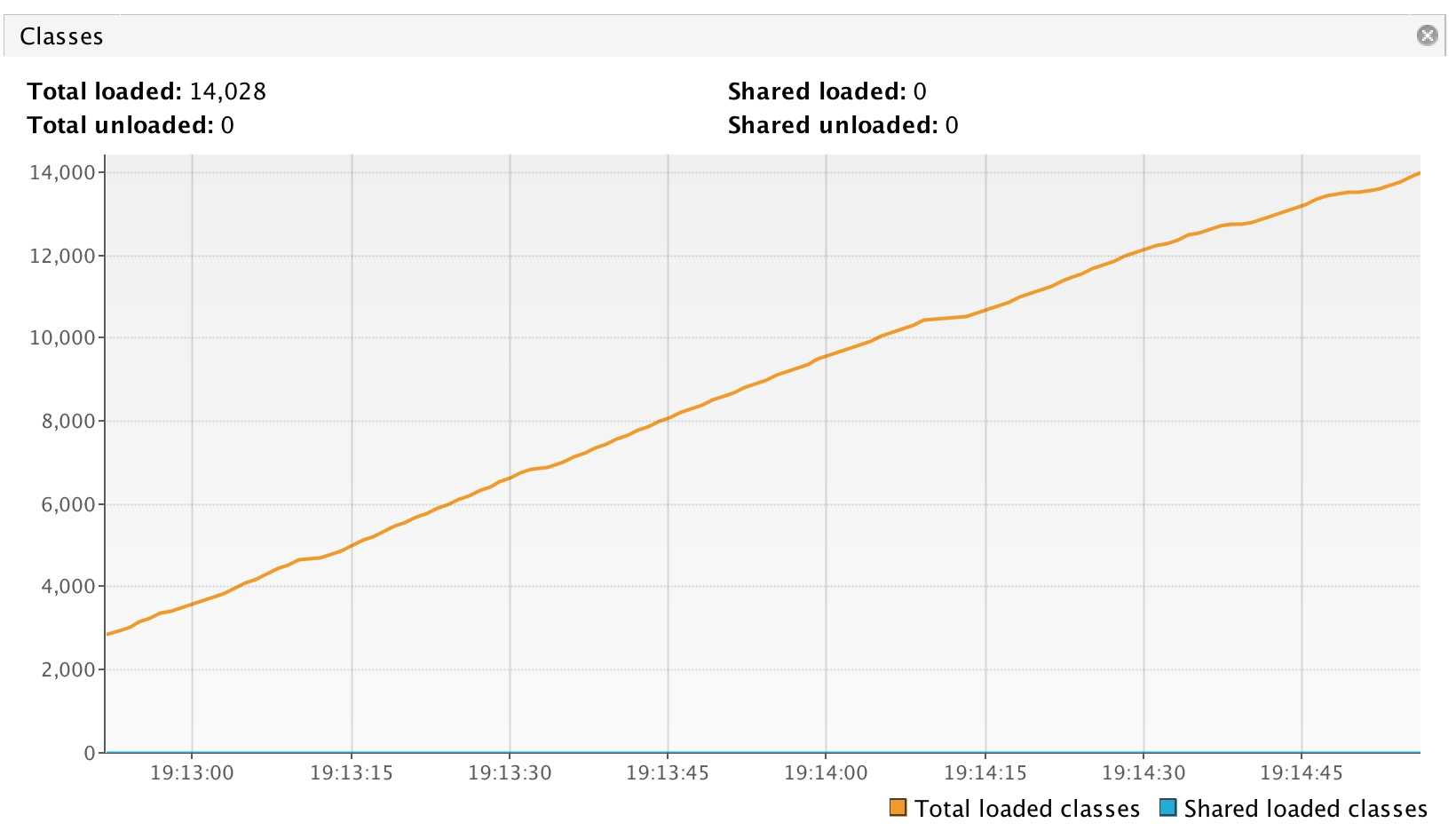
线程
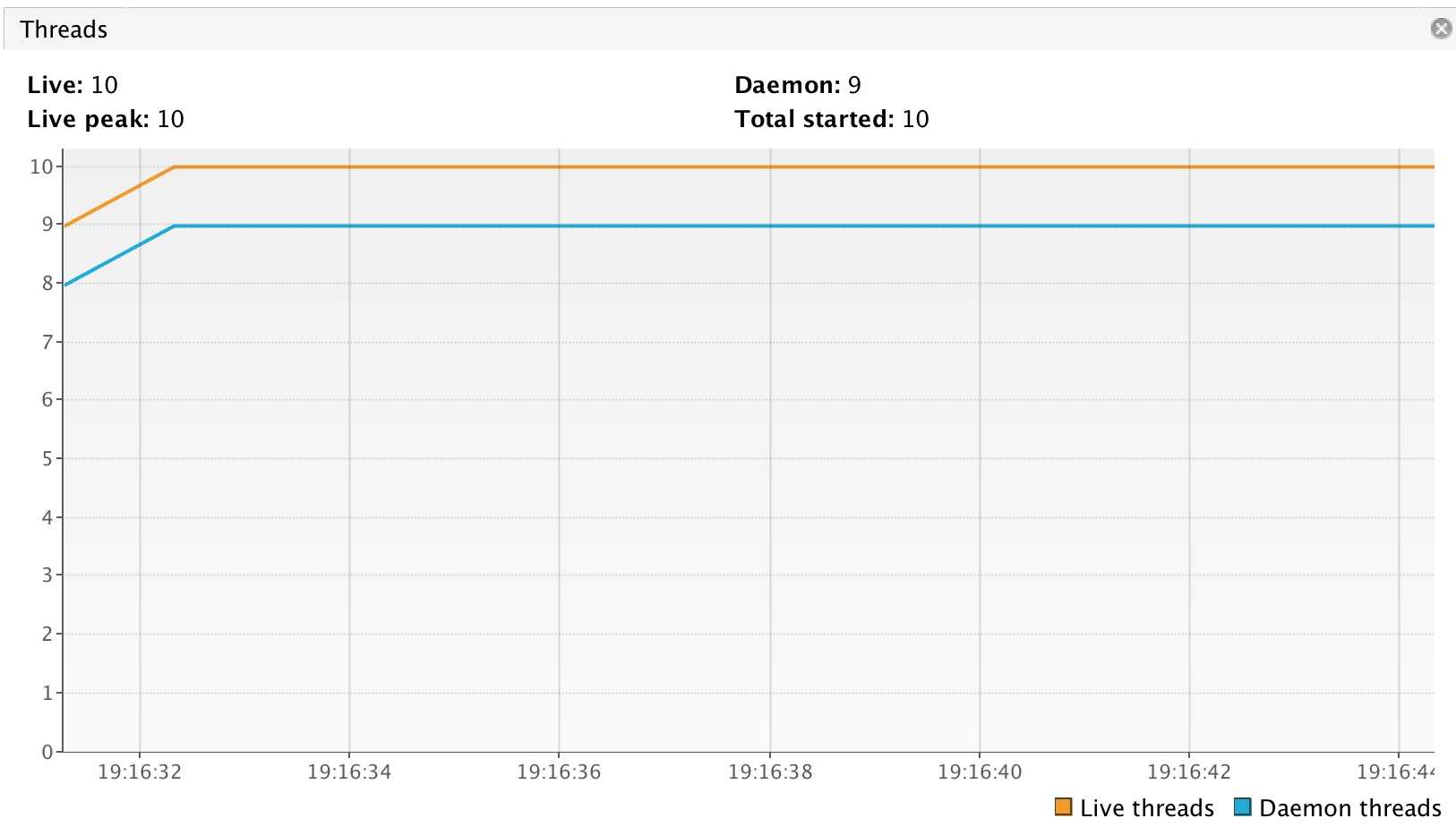
dump内存

可见,每次循环中生成的 Groovy method在方法执行完成之后并没有被释放掉,导致metaspace的使用量一直增加,最终撑爆JVM
针对以上问题,解决方法为每次将生成的方法缓存下了,下次要执行的时候从缓存中取。
private final ConcurrentHashMap<String, Invocable> concurrentHashMap = new ConcurrentHashMap<>();
private Object getInvokeResult(Object targetParam, String paramName, String expression) throws Exception {
//targetParamClassName="com.umgsai.web.home.vo.NodeVO"
String targetParamClassName = targetParam.getClass().getName();
//expression="$nodeVO.bizOwner"
//paramName="nodeVO"
String functionKey = String.format("%s_%s_%s", targetParamClassName, paramName, expression);
functionKey = StringUtil.replaceChars(functionKey, "$", "");
functionKey = StringUtil.replaceChars(functionKey, ".", "_");
//functionKey为方法的名称和concurrentHashMap的key,这里需要去掉特殊字符
Invocable invocable = concurrentHashMap.get(functionKey);
if (invocable != null) {
//如果缓存中有,直接调用
return invocable.invokeFunction(functionKey, targetParam);
}
//如果缓存中没有,生成方法,并且存到concurrentHashMap
synchronized (lock) {
invocable = concurrentHashMap.get(functionKey);
if (invocable == null) {
String function = String.format("def %s(%s) {return \"%s\"}", functionKey, paramName, expression);
engine.eval(function);
invocable = (Invocable) engine;
concurrentHashMap.put(functionKey, invocable);
if (log.isInfoEnabled()) {
String msg = String.format("Create new Groovy function, functionKey=%s, paramName=%s, expression=%s",
functionKey,
paramName, expression);
log.info(msg);
}
}
}
if (log.isInfoEnabled()) {
log.info(String.format("Groovy function concurrentHashMap.size=%d", concurrentHashMap.size()));
}
return invocable.invokeFunction(functionKey, targetParam);
}参考 http://www.zgxue.com/120/1204001.html
https://www.cnblogs.com/fourspirit/p/4332154.html
https://www.jianshu.com/p/b1a46cc02377
转载请注明出处 https://www.cnblogs.com/umgsai/p/10742271.html
标签:可见 堆内存 function ++ stat 解决方法 tps res 系统
原文地址:https://www.cnblogs.com/umgsai/p/10742271.html